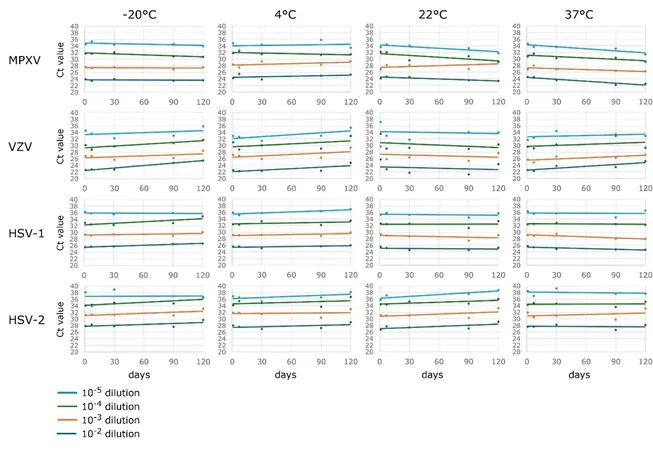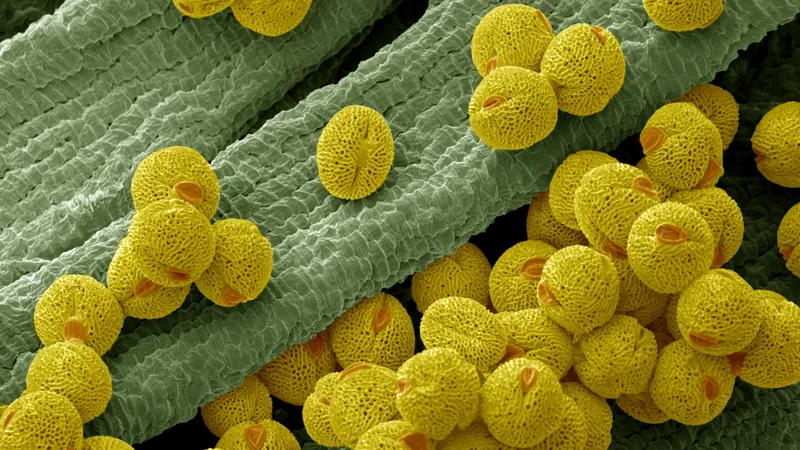
Revolutionary Chromatography Paper Strips Transform Monkeypox Detection
2025-09-02
Author: Jacob
The alarming resurgence of monkeypox, especially in new regions, has spotlighted urgent diagnostic challenges. This viral disease initially reveals itself with flu-like symptoms—fever, chills, and fatigue—quickly followed by swollen lymph nodes and a unique rash that transitions from macular to pustular stages, often crusting over just weeks later. However, diagnosing monkeypox can be misleading due to its symptom overlap with other diseases like chickenpox, measles, and sexually transmitted infections.
Essential for accurate diagnostic practices, laboratory confirmation is critical as monkeypox materials fall under strict Category A infectious substances guidelines, necessitating a rigorous triple packaging protocol for transportation. The logistics around maintaining required refrigerative conditions can be daunting, especially in isolated forested regions where infrastructure is lacking.
Breakthrough: Stable Sample Collection Innovations
Enter a groundbreaking solution: room-temperature-stable chromatography paper strips treated with SDS-EDTA for sample collection. These strips not only cut costs but also ease logistical hurdles tied to mpox testing. Previously validated for other viruses, this innovative approach is now being applied to detect monkeypox alongside common differential targets like varicella zoster virus and herpes simplex viruses.
**How They're Made:** The preparation of these chromatography strips is straightforward. Originally made from high-absorbency cellulose paper, the strips are treated in a solution of sodium dodecyl sulfate (SDS) and ethylenediaminetetraacetic acid (EDTA), ensuring they are ready for sample collection after air-drying overnight.
Effective Testing and Longevity Under Difficult Conditions
Testing has shown that these strips retain viral detection capabilities across various temperatures and extended storage durations. Even after 120 days under challenging conditions, the strips successfully identified low concentrations of monkeypox and varicella DNA. This durability is pivotal, particularly for regions where high temperatures and extended transport times are the norm.
Moreover, these strips can detect viral loads as low as two copies per microliter—significantly relevant given their intended use on skin lesions, which contain high viral counts. The cost-effectiveness also stands out, with production costing approximately just €0.10 per strip, and preparations taking only an hour for multiple strips.









 Brasil (PT)
Brasil (PT)
 Canada (EN)
Canada (EN)
 Chile (ES)
Chile (ES)
 Česko (CS)
Česko (CS)
 대한민국 (KO)
대한민국 (KO)
 España (ES)
España (ES)
 France (FR)
France (FR)
 Hong Kong (EN)
Hong Kong (EN)
 Italia (IT)
Italia (IT)
 日本 (JA)
日本 (JA)
 Magyarország (HU)
Magyarország (HU)
 Norge (NO)
Norge (NO)
 Polska (PL)
Polska (PL)
 Schweiz (DE)
Schweiz (DE)
 Singapore (EN)
Singapore (EN)
 Sverige (SV)
Sverige (SV)
 Suomi (FI)
Suomi (FI)
 Türkiye (TR)
Türkiye (TR)
 الإمارات العربية المتحدة (AR)
الإمارات العربية المتحدة (AR)